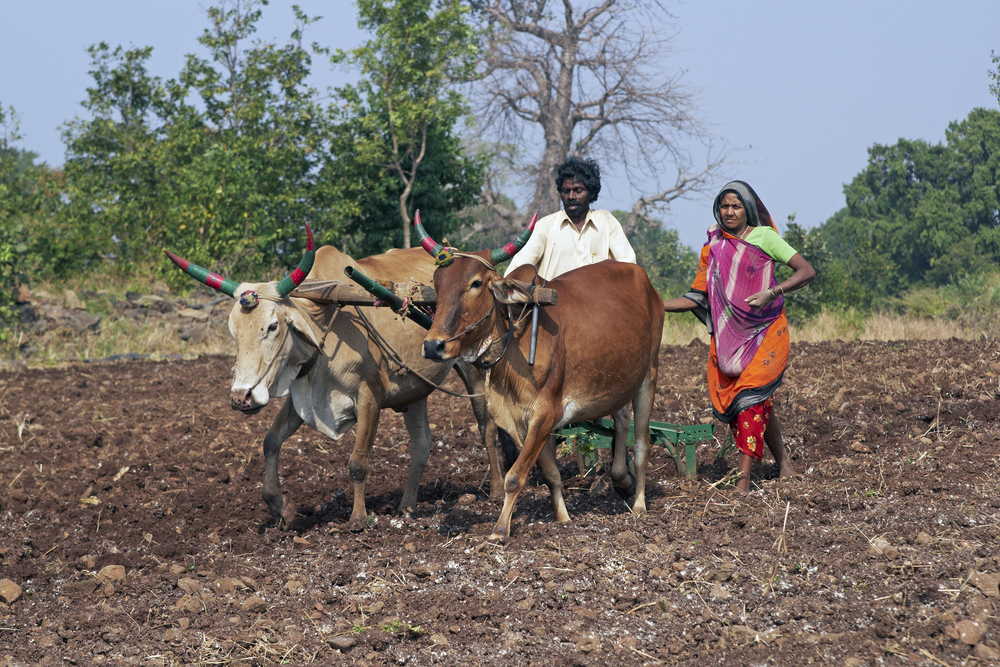Bridging the Digital Gap in Rural India
Through Bharat Net Project, the govt intends to digitally empower Gram Panchayats and offer 100 mbps connectivity

The growing significance of technology, digital empowerment, as well as financial inclusion, have become the key drivers of a country's economic growth and development. The increasing penetration of smartphones, affordable data packs, and accessible digital services have all together contributed to ensuring digital empowerment in India. However, a lot more needs to be done for the rural segment of the country that still lacks complete access to the digital world.
Challenges Facing Rural India
Despite the sustainable growth and humongous potential of rural India in the economy, issues like digital poverty, lack of infrastructure, illiteracy, low skill development pose huge challenges in the growth of the rural segment.
The government and as well as private players have taken numerous initiatives to encourage previously under-banked and digitally backward populations to adopt a digital mode of payment, but issues remain of last-mile connectivity of banks and dormant accounts. As digital empowerment of the rural population is important to bridge the gap between urban and rural India, some serious efforts need to be made.
Government Initiatives for Digital Empowerment
Various challenges are facing digital and financial inclusion in India. These include a lack of robust technology infrastructure, a lack of trust and confidence in digital payments, as well a shortage of affordable and reliable internet connectivity options. Several initiatives and policies have been launched by the government to facilitate digital empowerment, especially for the rural population. One of the most important initiatives is the Prime Minister’s ‘Digital India’ programme which was launched on July 1, 2015. The one-of-its-kind campaign came up with many new initiatives to ensure that all government services digitally reach people across the country through high-speed internet.
Another initiative - the Bharat Net Project aims to enhance e-banking, e-governance, internet services, e-education. to the villages in India. The government intends to digitally empower and connect all the Gram Panchayats and offer 100 mbps connectivity. Besides, Pradhan Mantri Jan Dhyan Yojana (PMJDY) also contributes to the financial and digital inclusion of rural India by facilitating online transactions through RuPay debit card.
Role of Fintech Companies
Realising the fact that rural India holds significant importance in achieving the economic development of the country, fintech companies are increasingly taking initiatives to make digital services accessible for rural India. For example, the stunning initiatives by the government as well as fintech companies have taken India from a cash-driven country in the pre-demonetisation period to a digitally empowered country where the digital mode of payments is more popular than ever.
These companies are constantly making serious efforts to deploy Kiosks, PoS devices, and Mobile Vans across rural India to digitally collect recurring bills (mobile bills, electricity bills, DTH, water bills) from remote villages. The payments are facilitated through UPI, net banking, mobile banking, debit or credit card, and even cash. These fintech companies follow a fully safe and secure blockchain-based payment gateway. Further, substantial investments are being made in need-based products, financial literacy as well as in social and physical infrastructure. Making credit disbursement more flexible and attracting masses that are used to informal sources of credit are the top-most priorities of these fintech companies. These noble initiatives complement in bridging the digital gap in the country.
Moreover, several government bodies like the National Bank for Agriculture and Rural Development (NABARD) also offer varied monetary facilities to rural people. These include direct finance, long-term loans, short-term loans for the financial inclusion of rural India. Eliminating multiple layers of governance and better participatory roles by benefactors are also some of the initiatives that are helping to build a better delivery infrastructure in rural India. Conducting risk management assessments, investing in audit studies, and reducing the risk of agent misconduct are some of the popular and effective strategies that the government is adopting.
Summing Up
Today, a larger portion of the population than ever is transacting cashless and paperless. It has been solely possible by stunning initiatives by impactful fintech companies and the government. Through the array of digital payment services in rural India, these stakeholders are spreading digital empowerment and moving closer to digital and financial inclusion.
Since the digital divide between the urban and rural is too wide, all stakeholders, including the policymakers, regulators, industry bodies, and service providers need to consistently focus on developing policies or initiatives for inclusive growth.
The author is Founder and CEO, XPAY Life
DISCLAIMER: Views expressed are the author’s own, and Outlook Money does not necessarily subscribe to them. Outlook Money shall not be responsible for any damage caused to any person/organisation directly or indirectly.









